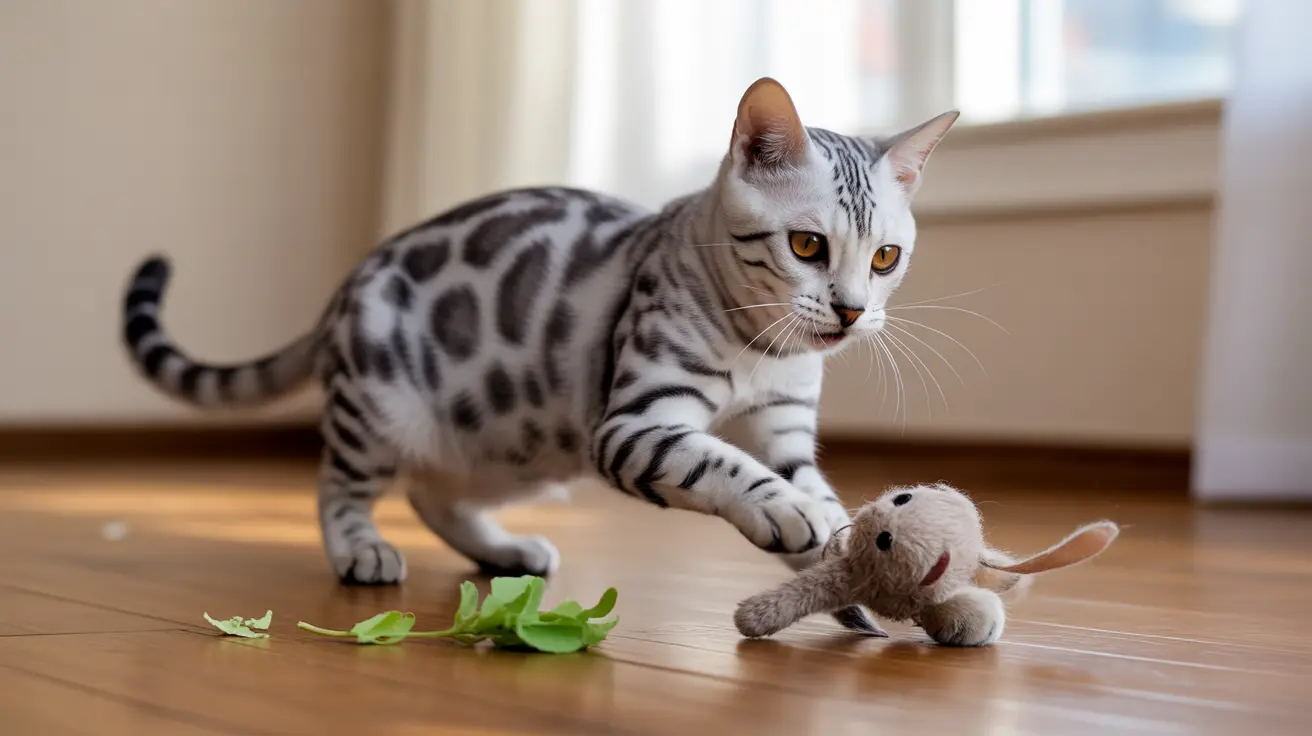Introducing catnip to your feline friend can be a wonderful way to enhance their playtime and provide enrichment. Whether you're a first-time cat owner or looking to optimize your pet's catnip experience, this comprehensive guide will walk you through everything you need to know about safely giving cats catnip.
Understanding how to give cats catnip properly ensures your pet can enjoy its benefits while avoiding potential issues. Let's explore the best methods, dosages, and safety considerations for using this natural herb with your cat.
Understanding Catnip and Its Effects
Catnip (Nepeta cataria) contains nepetalactone, a compound that triggers behavioral responses in cats through their olfactory system. When cats encounter this herb, they may exhibit various reactions, from increased playfulness to relaxation, typically lasting 10-15 minutes.
Not all cats respond to catnip – approximately 70-80% of adult cats show sensitivity to it. Kittens under 3-6 months typically don't react, and some cats may never develop sensitivity to catnip.
Best Methods for Giving Catnip
Dried Catnip
Start with a small pinch of dried catnip, sprinkling it on your cat's favorite toys or scratching post. This method allows your cat to control their exposure through both smell and taste.
Catnip Toys
Pre-made catnip toys offer a controlled way to deliver the herb. Look for toys that are sturdy and well-sealed to prevent excessive ingestion while allowing the scent to permeate.
Catnip Spray
Sprays provide a mess-free alternative and are particularly useful for cats who may have sensitive stomachs when ingesting dried catnip. Apply one or two spritzes to toys or scratching posts.
Safe Dosage and Frequency
A good starting point is about 1/2 teaspoon of dried catnip. Monitor your cat's reaction and adjust the amount accordingly. While catnip is non-addictive, it's best to limit sessions to once or twice a week to maintain its effectiveness.
Allow at least 30-60 minutes between exposures, as cats need time to reset their sensitivity to catnip's effects. Overexposure can lead to decreased response over time.
Safety Precautions and Storage
Store catnip in an airtight container in a cool, dark place – ideally the freezer – to maintain potency. Always supervise your cat during catnip sessions, especially when introducing it for the first time.
Remove catnip-infused items once your cat loses interest to prevent overconsumption and maintain the novelty factor.
Training and Enrichment Applications
Catnip can be an excellent training tool. Use it to encourage scratching post use, ease anxiety during vet visits, or help your cat adjust to new environments. For multi-cat households, introduce catnip individually to avoid potential conflicts.
Frequently Asked Questions
How do I safely introduce catnip to my cat for the first time?
Start with a small amount (1/4 to 1/2 teaspoon) of dried catnip in a controlled environment. Observe your cat's reaction for 10-15 minutes. If they respond well, you can gradually increase the amount in future sessions.
What is the recommended amount and frequency for giving cats catnip?
Use 1/2 to 1 teaspoon of dried catnip per session, limiting sessions to once or twice weekly. Allow at least 30-60 minutes between exposures for sensitivity to reset.
What are the best methods to offer catnip—sprays, toys, fresh leaves, or dried?
Each method has its benefits: dried catnip offers direct exposure, toys provide controlled release, sprays are mess-free, and fresh leaves are most potent. Choose based on your cat's preferences and reaction intensity.
Can catnip cause side effects, and how can I tell if my cat has had too much?
While generally safe, excessive ingestion may cause mild vomiting or diarrhea. Signs of overexposure include agitation or lethargy. If these occur, remove the catnip and allow your cat to recover.
Why does my kitten or some cats not respond to catnip, and are there alternatives?
Catnip sensitivity is genetic and doesn't develop until 3-6 months of age. For non-responsive cats, alternatives include silver vine, Tatarian honeysuckle, or valerian root, which may elicit similar responses.






